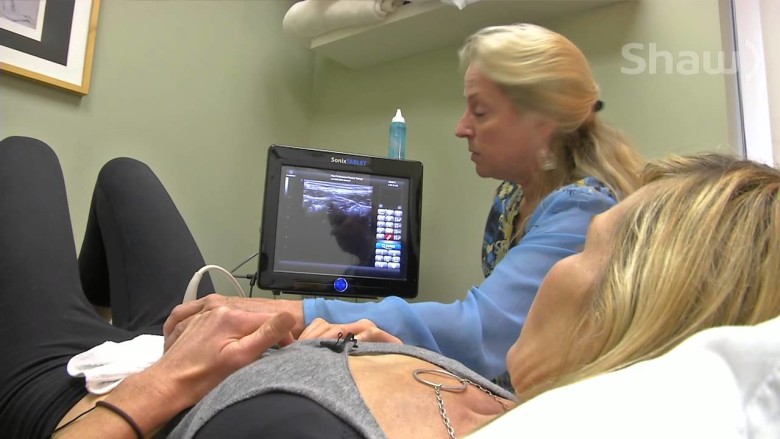In a town where everyone seems intent on (and content with) throwing themselves off of bigger things, faster than the last guy, and with another half rotation, it stands to reason that the inhabitants of this town suffer more injuries than the average Canadian citizen. Summer or winter, you can sometimes tell how the conditions have been that season based on how many AirCasts are on the Village Stroll any given day.
In any business, a high demand quickly weeds out the competition that can’t stand up to the pressure. When it comes to sports injuries, Whistler is the Thunderdome for restorative physio – your therapist damn well better know what they’re doing.
Peak Performance is the horse to back. Centrally located, a quick hobble from the base of both Whistler and Blackcomb Mountains, their experts have a range of sporting background themselves, from skiing to gymnastics. Consistently voted Best Physiotherapy in Whistler, you know that they’re up to scratch.
“I’ve known Kye Petersen since he was 8, so I guess that’s how this whole thing started. They didn’t have any money, and he was just out there on his own. He was so badly damaged so often, and it gave me this opportunity to help him, and eventually others.” Allison McLean, herself regularly winning “Whistler’s Best Physiotherapist” can explain the secret to her practice’s success, particularly with athletes.
“I don’t sponsor ski racers, people that have that infrastructure. My interest is more in the independent athletes. Those kind of athletes that don’t have sponsors or organizations that take care of them health wise. They’re out there, and if they get injured, they’re really out there. They don’t have the money, and their sponsors won’t do anything for them.
“Obviously it’s changing over time: Red Bull is really pulling up their socks and making sure that they’re covered. Sean Pettit, for example, is still sponsored by us so that when he comes to Peak Performance, he’s taken care of. But Red Bull does the other stuff – takes their athletes to nutritionists, to training. They’re more after keeping them going while they’re healthy.”
McLean also let me in on what could be the most telling information: “I’ve never gone fishing for clients. It’s not like I’ve gone out and said ‘OK, if you come to my practice, we’ll do this for you’. All of my athletes have approached me. They were here anyway, getting treatment, and it made sense to put our name up with theirs. Sometimes you need to see an athlete’s injury every day for two weeks to really do this right, but we may only see them once or twice total, based on what they could afford.” Athletes given the choice, come to Peak Performance.
I asked about the season so far in relation to injuries. More than previous years? More severe? “We’ve seen injuries that are a whole lot worse than previous years. A huge increase in fractures. There’s a pretty sick joke in the medical world in Whistler, where you can tell what kind of day you’re going to have at work based on the conditions: If it’s hard and boilerplate, the clients generally have fractures, tears, that kind of stuff. If it’s soft, we get ACLs and discs, soft tissue problems. The doctors at the clinic do the same thing – they look up the mountain and think “Ugh.”
As if that’s not enough, take it straight from the athlete. Snowboarder Andrew Matthews is no stranger to gnar. “When I wreck myself on the hill I know who to call! My friends always tell the story about the time when I took a bail and immediately called Peak Performance to book a physio appointment. Of course I have them on speed dial. In this town we all like to push our bodies to the limit. I’m thankful to be able to work with the amazing staff at Peak to put me back together when I inevitably push things a little too hard.

“Peak Performance continuously amazes me with their knowledge and ability to help people recover from injuries. On several occasions I’ve gone in the clinic and told them about an injury that’s bothered me for months or even years, having little hope that anything will change, only to be set straight with one or two treatments. One example was my lower back. I had experienced crippling lower back pain on and off for a couple years when I first went into the clinic. Alison was able to identify that the problem lay in my tight hip muscles. With a little help from some IMS treatment I was able to overcome the injury and to this day (four years later) no longer have the crazy lower back spasms that I used to. Their approach to looking at the whole body as a connected system instead of just treating the symptomatic area is really what sets Peak Performance apart from the rest.
“I’m also very impressed with the amount that Peak invests to stay on top of the latest tools and techniques to help people out. Everything from the real time ultrasound to the continuous courses that the physiotherapists take to learn about the new research and techniques as they develop – Peak Performance is always staying on top of the latest resources to give their patients the best care possible.
The name travels far and wide – doctors and lawyers in London know to look up Peak Performance when they’re on their Christmas ski vacation, thanks to my mother and a particularly nasty fall. At the end of one treatment session, she was back skiing, where prior she couldn’t even put weight on her leg. If all of this doesn’t convince you – the professionalism, the testimonies from athletes and non-athletes, and thinking about the Little Guys – don’t forget to ice that knee, and I’d invest in a family pack of painkillers if I were you.
~by Aaron Peart

